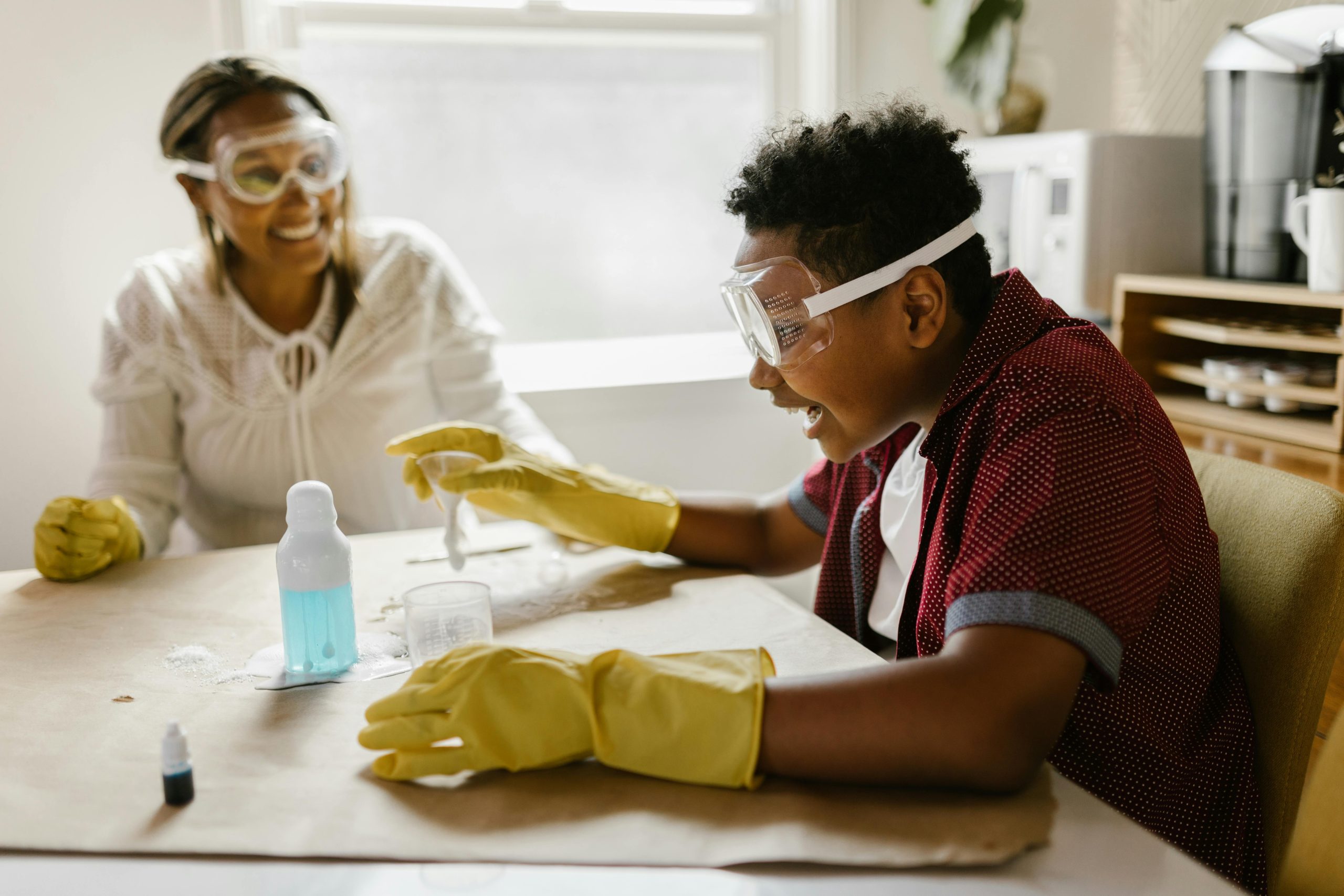Looking for a fun and educational science experiment to do with your kids? The classic baking soda and vinegar volcano is a fantastic way to spark curiosity about chemistry while keeping little hands busy. This easy DIY volcano experiment creates a bubbly, colorful eruption that will wow children and teach them about chemical reactions in an exciting, hands-on way. Best of all, it uses simple household ingredients and requires minimal setup—perfect for a rainy day activity or a science project!
What You’ll Need for the DIY Volcano Experiment
Before you get started, gather these basic supplies:
- Baking soda (about 2-3 tablespoons)
- Vinegar (white or apple cider, around 1 cup)
- Dish soap (optional, for extra foam)
- Food coloring (red, orange, or yellow for a lava effect)
- A small container or bottle (to hold the reaction)
- Playdough, clay, or paper mâché (to build the volcano structure)
- A tray or large plate (to catch the mess)
If you don’t have playdough or clay, you can also use a mound of dirt or sand outdoors for a more natural-looking volcano.
Step-by-Step Instructions to Create Your Volcano
1. Build the Volcano Structure
Start by shaping your volcano around a small container or bottle. If using playdough or clay, mold it into a cone shape with an opening at the top where your container sits. Make sure the container is secure and won’t tip over during the eruption. For an outdoor version, dig a small hole in a pile of sand or dirt and place your container inside.
2. Prepare the Eruption Mixture
Add 2-3 tablespoons of baking soda to the container at the center of your volcano. For a more dramatic reaction, mix in a few drops of dish soap—this will create extra bubbles and foam. Add a few drops of food coloring to make the “lava” look realistic (red or orange works best).
3. Time for the Eruption!
Pour vinegar into the container and watch the magic happen! The baking soda (a base) and vinegar (an acid) react to produce carbon dioxide gas, creating the bubbly eruption. For a bigger reaction, use more vinegar or add it quickly. Kids will love seeing the colorful foam spill over the sides of the volcano like real lava.
The Science Behind the Baking Soda and Vinegar Reaction
This experiment isn’t just fun—it’s a great way to teach kids about chemical reactions. Here’s what’s happening:
- Acid + Base Reaction: Vinegar (acetic acid) reacts with baking soda (sodium bicarbonate) to produce carbon dioxide gas, water, and a salt called sodium acetate.
- Gas Expansion: The carbon dioxide gas creates bubbles, which expand rapidly, causing the foamy eruption.
- Role of Dish Soap: Adding dish soap traps the gas bubbles, making the foam thicker and longer-lasting.
Encourage kids to observe the reaction and ask questions like, “What happens if we use more baking soda?” or “Why does the foam rise?” This helps them think like little scientists!
Tips for Making the Experiment Even More Fun
Want to take this experiment to the next level? Try these variations:
- Glow-in-the-Dark Lava: Use glow paint or a black light with neon food coloring for a nighttime eruption.
- Mini Volcanoes: Set up multiple small containers with different food colors for a rainbow of eruptions.
- Citric Acid Alternative: Replace vinegar with lemon juice for a different acid reaction.
- Record the Reaction: Film the eruption in slow motion to see the bubbles forming up close.
You can also turn this into a full science lesson by discussing real volcanoes and how they erupt with molten rock and gases.
Conclusion
The baking soda and vinegar volcano experiment is a timeless, easy, and exciting way to introduce kids to basic chemistry. With just a few household items, you can create a memorable learning experience that combines creativity and science. Whether you’re doing it at home, in a classroom, or outdoors, this experiment is sure to inspire curiosity and lots of giggles. So grab your supplies and get ready for an eruption of fun!
